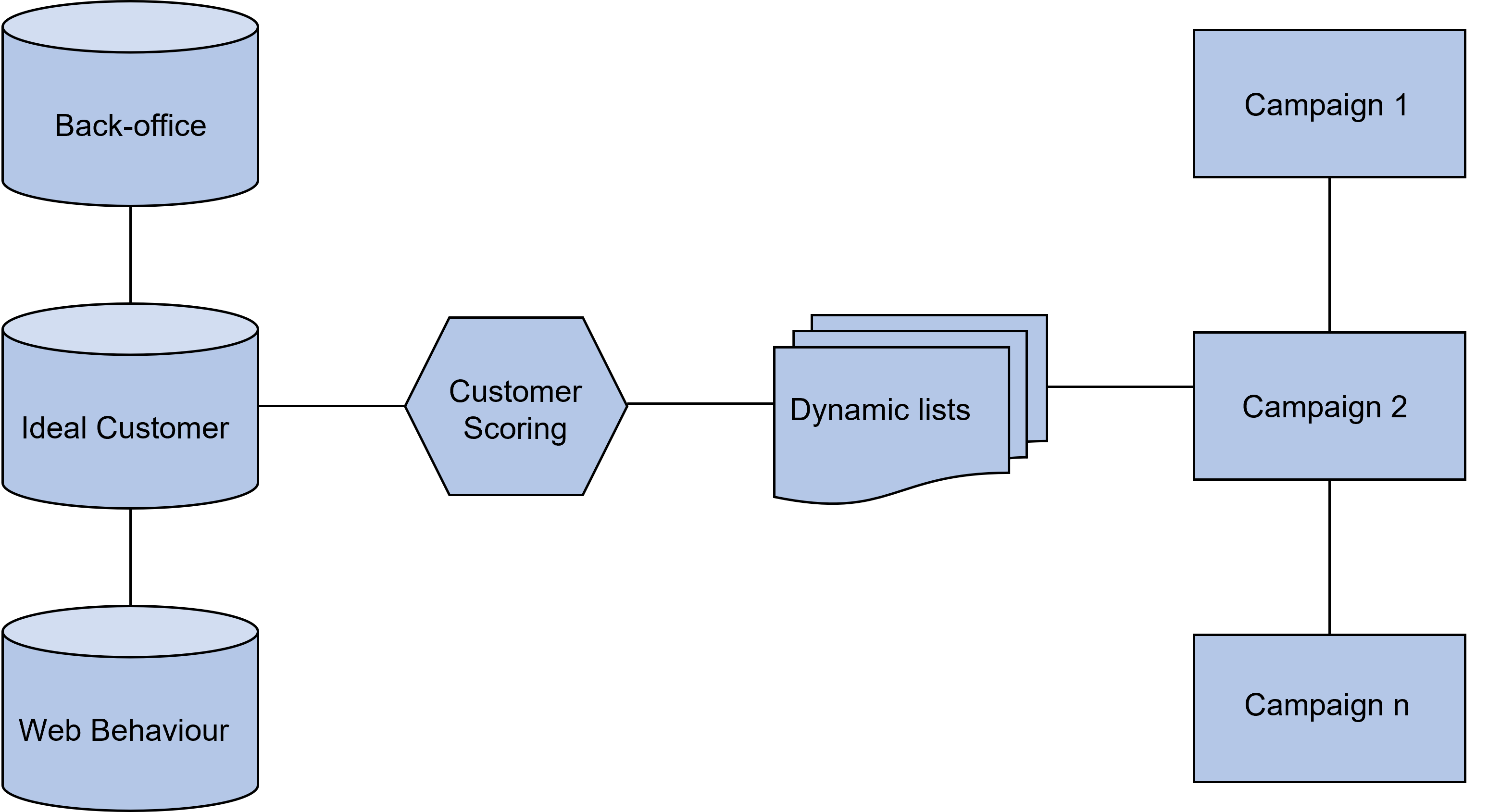1. Begin with facts: define your existing customer base
There is no magic bullet here, but this is still the most important part of the bigger blueprint. Every marketing campaign, lead generation activity and sales process begins by defining who your customers are. So, the first is to define the facts about your existing customers.
Write down at minimum the following:
- Turnover
- Profit
- Industry
- Geo
- Trigger/Motive to purchase: safety, efficiency, technology, legal, financial, etc…
- Main customer contact’s department
- Main customer contact’s title
- Main customer contact’s function
- Products they have purchased
- Gross margin per customer
- Gross profit per customer
2. Define your ideal customer and the buyer personas
The ideal customer is the segment of customers in your existing customer base that you want to focus on. Defining the ideal customer helps you focus your business on your strategy and objectives. If all our leads were ideal customers, we would never stop growing on a healthy and profitable curve. Ask your team the following questions:
- What are the traits your ideal customers have?
- What are the facts behind their business?
- How do they behave on your website?
- What drives their purchase decision?
- What are the buyer personas of your ideal customer?
3. Match your ideal customers’ buyer personas with your digital experience
Once you have narrowed down the buyer persona, you begin to draft the path they go through during the purchase decision, from unknown to evangelist. Each buyer persona is provided with content that answers the specific questions handled in each stage of the journey. There are multiple use cases for creating the buyer journey depending on the motivation that drives the buyer. The most typical buyer journey is the new customer journey where the customer is encountering your company for the first time. The others are processes such as re-visit, subscription, on-boarding, re-purchase, complaints, etc. When doing B2B sales, the most important one to focus on is the new customer journey. There are several different ways to name the stages of a customer journey. We like to use the one from HubSpot. The three core stages of buyer journey are Awareness, Consideration and Decision as shown in figure 3. You could also split it into four stages like the REAN, Reach, Engage, Activate, Nurture, or the good old AIDAS. The point is not really which acronyms and names you use, the point is to use one of them systematically and accompany the buyer journey with data you have defined during the customer definition stages.
Snapshot of HubSpot’s Customer Journey Template.








Sisällön yhteydessä voidaan näyttää sosiaalisessa mediassa julkaistuja sisältöjä. Sosiaalisen median palvelut (esim. Facebook, Instagram, X ja YouTube) voivat hyödyntää evästeillä kerättyjä tietoja omassa käytössään. Näitä kohteita käytetään sinulle ja sinun etuihisi liittyvän mainonnan toimittamiseen. Lisäksi näitä evästeitä voidaan käyttää mittaamaan mainoskampanjoiden tehokkuutta. Mainosverkostot sijoittavat ne yleensä verkkosivuston ylläpitäjän luvalla.